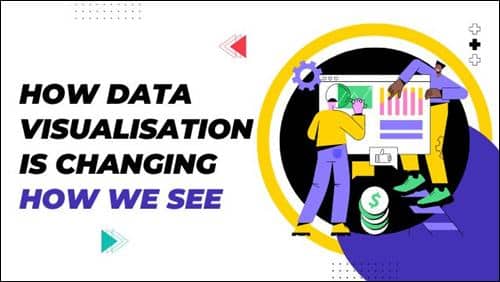
In today’s world, we are constantly surrounded by vast amounts of data. Whether it’s the latest statistics on climate change or the number of likes on a social media post, data is all around us. However, with so much information available, it can be challenging to make sense of it all. As a result, it is of little wonder data visualisation tools have become so popular with large and small businesses alike.
Data visualisation has had a profound impact on the way businesses see and understand their data. With the increasing amount of data that businesses generate and collect, the use of data visualisation has become an essential tool for making sense of the information that can shape future strategies and campaigns. By presenting data in a visual format, businesses can quickly identify trends, patterns and correlations that may not be immediately apparent when looking at raw data or an old-fashioned spreadsheet. As a result, it can help businesses make informed, data-driven decisions about their operations, identify opportunities for growth and optimise their performance – without relying on the opinions, experiences and gut reactions of stakeholders and managers.
So what is data visualisation? And why has it become a crucial tool in modern business intelligence?
What is data visualisation?
Data visualisation is the process of representing information in a visual or graphical format to help people better understand the patterns, trends and relationships within the data. This involves using charts, graphs, maps and other visual aids to communicate complex information in a clearer and more effective way.
As a result, data visualisation has changed the ways in which we draw conclusions about the world. The goal of data visualisation is to make it easier for people to analyse and interpret large amounts of data quickly and accurately, allowing them to gain insights and make better, more informed decisions. As a result, effective data visualisation requires the careful selection of appropriate charts or graphs, attention to detail in design and labelling and of course, an in-depth understanding of the audience and their needs – after all, there is little point in visualising data in a way users cannot understand.
Data visualisation in business intelligence
It goes without saying that every business, regardless of industry, benefits from understanding its data. In fact, for every modern organisation, data is their most significant advantage. From infographics, maps and charts to videos and slides, visual mediums can be enormously helpful in visualising and understanding data – it allows decision-makers to interrelate datasets, unearth better, deeper insights and reap the rewards.
Basically, with the help of data visualisation tools such as Microsoft Power BI, complex data sets can be transformed into easy-to-understand visuals like charts, graphs, tables and dashboards, which can be used to analyse trends, patterns and relationships. As a result, data visualisation plays a crucial role in business intelligence (BI). The process can provide and unearth meaningful insights into a dataset and help important stakeholders make more informed decisions.
Why is data visualisation important?
Data visualisation is essential in quickly identifying trends in data. The pictorial representation of information allows business analysts to visualise patterns and new concepts, which with the increasing surge in data is helpful in organising, interpreting and leveraging information.
Data visualisation allows for…
- More in-depth analysis – The process of visualising data is about more than just displaying information. It also involves representing actions and behaviours. Through data visualisation, businesses can explore visual thinking and learn how to present and convey results effectively for a more in-depth analysis.
- Quick decisions – Data visualisation is advantageous for decision-makers because the process uses compelling and captivating images, making it simpler to identify quick and effective courses of action that promote business growth.
- Easier recognition of patterns – It can still be challenging to identify patterns or establish connections between data points, especially if a business is relying on old-fashioned spreadsheets. Data visualisation provides an opportunity for stakeholders to delve deeper into specific patterns and recognise them more quickly and effectively.
In a nutshell, data visualisation is also an important tool for understanding the bigger picture. It can help businesses gain a clearer understanding of the task at hand and increase the likelihood of conveying the entire picture with a single glance to the audience. This is especially critical when attempting to communicate changes within an organisation.
Final thoughts
So what is data visualisation? And how is it changing the way businesses and professionals alike perceive, unearth and leverage information?
In the digital era, we are exposed to an abundance of data from various sources which can make it difficult to extract and unearth meaningful insights. It is little wonder data visualisation tools have become increasingly popular for large and small businesses alike – after all, it’s the easiest and most effective way of comprehending the large amounts of data and information modern organisations are generating and collecting. By presenting data in a visual format, such as graphs, charts and maps, businesses can quickly identify hidden patterns, trends, and relationships that may not be immediately obvious in raw data or spreadsheets. As a result, data visualisation has become an essential tool for making informed, data-driven decisions, identifying opportunities and optimising performance for the purpose of nurturing business growth. These insights can be obtained without relying solely on the opinions, experiences and gut reactions of stakeholders and managers, leading to more objective and evidence-based decision-making. Therefore, it should come as little surprise that businesses have embraced data visualisation tools as a means to better understand and leverage their data. It’s essentially changing the way we see, perceive, unearth and interpret information.
Leave a Reply
You must be logged in to post a comment.